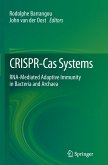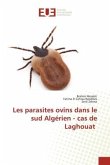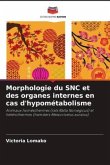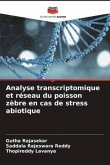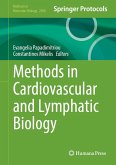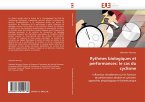CRISPR-Cas Methods
Volume 3
Herausgegeben:Islam, M. Tofazzal; Molla, Kutubuddin; Bhowmik, Pankaj; Xie, Kabin
CRISPR-Cas Methods
Volume 3
Herausgegeben:Islam, M. Tofazzal; Molla, Kutubuddin; Bhowmik, Pankaj; Xie, Kabin
- Gebundenes Buch
- Merkliste
- Auf die Merkliste
- Bewerten Bewerten
- Teilen
- Produkt teilen
- Produkterinnerung
- Produkterinnerung
This third edition expands upon the previous two editions with new and updated methods presenting comprehensive, step-by-step protocols for recently developed techniques that were not included in the earlier volumes. Chapters feature contributions from the globally leading experts in the field, aiming to equip researchers with the practical tools necessary for successful CRISPR experimentation.
Authoritative and cutting-edge, CRISPR-Cas Methods, Volume 3 aims to be a useful and practical guide for researches to help further their study in this field.
Andere Kunden interessierten sich auch für
![CRISPR-Cas Systems CRISPR-Cas Systems]() CRISPR-Cas Systems151,99 €
CRISPR-Cas Systems151,99 €![Les parasites ovins dans le sud Algérien - cas de Laghouat Les parasites ovins dans le sud Algérien - cas de Laghouat]() Brahim MerabtiLes parasites ovins dans le sud Algérien - cas de Laghouat39,99 €
Brahim MerabtiLes parasites ovins dans le sud Algérien - cas de Laghouat39,99 €![Morphologie du SNC et des organes internes en cas d'hypométabolisme Morphologie du SNC et des organes internes en cas d'hypométabolisme]() Victoria LomakoMorphologie du SNC et des organes internes en cas d'hypométabolisme23,99 €
Victoria LomakoMorphologie du SNC et des organes internes en cas d'hypométabolisme23,99 €![Impact du COVID19 sur l'écotourisme dans le district de Wayanad: Une étude de cas Impact du COVID19 sur l'écotourisme dans le district de Wayanad: Une étude de cas]() Boby JoseImpact du COVID19 sur l'écotourisme dans le district de Wayanad: Une étude de cas29,99 €
Boby JoseImpact du COVID19 sur l'écotourisme dans le district de Wayanad: Une étude de cas29,99 €![Analyse transcriptomique et réseau du poisson zèbre en cas de stress abiotique Analyse transcriptomique et réseau du poisson zèbre en cas de stress abiotique]() Gutha RajasekarAnalyse transcriptomique et réseau du poisson zèbre en cas de stress abiotique39,99 €
Gutha RajasekarAnalyse transcriptomique et réseau du poisson zèbre en cas de stress abiotique39,99 €![Methods in Cardiovascular and Lymphatic Biology Methods in Cardiovascular and Lymphatic Biology]() Methods in Cardiovascular and Lymphatic Biology149,99 €
Methods in Cardiovascular and Lymphatic Biology149,99 €![Rythmes biologiques et performances: le cas du cyclisme Rythmes biologiques et performances: le cas du cyclisme]() Sébastien MoussayRythmes biologiques et performances: le cas du cyclisme51,99 €
Sébastien MoussayRythmes biologiques et performances: le cas du cyclisme51,99 €-
-
-
This third edition expands upon the previous two editions with new and updated methods presenting comprehensive, step-by-step protocols for recently developed techniques that were not included in the earlier volumes. Chapters feature contributions from the globally leading experts in the field, aiming to equip researchers with the practical tools necessary for successful CRISPR experimentation.
Authoritative and cutting-edge, CRISPR-Cas Methods, Volume 3 aims to be a useful and practical guide for researches to help further their study in this field.
Authoritative and cutting-edge, CRISPR-Cas Methods, Volume 3 aims to be a useful and practical guide for researches to help further their study in this field.
Produktdetails
- Produktdetails
- Springer Protocols Handbooks
- Verlag: Humana / Springer US / Springer, Berlin
- Artikelnr. des Verlages: 978-1-0716-4357-0
- 3. Aufl.
- Seitenzahl: 312
- Erscheinungstermin: 20. März 2025
- Englisch
- Abmessung: 260mm x 183mm x 23mm
- Gewicht: 716g
- ISBN-13: 9781071643570
- ISBN-10: 1071643576
- Artikelnr.: 71966097
- Herstellerkennzeichnung
- Springer-Verlag GmbH
- Tiergartenstr. 17
- 69121 Heidelberg
- ProductSafety@springernature.com
- Springer Protocols Handbooks
- Verlag: Humana / Springer US / Springer, Berlin
- Artikelnr. des Verlages: 978-1-0716-4357-0
- 3. Aufl.
- Seitenzahl: 312
- Erscheinungstermin: 20. März 2025
- Englisch
- Abmessung: 260mm x 183mm x 23mm
- Gewicht: 716g
- ISBN-13: 9781071643570
- ISBN-10: 1071643576
- Artikelnr.: 71966097
- Herstellerkennzeichnung
- Springer-Verlag GmbH
- Tiergartenstr. 17
- 69121 Heidelberg
- ProductSafety@springernature.com
Targeted base editing in rice using Target-AID.- Accelerated laboratory evolution of conjugative plasmids for CRISPR delivery in bacteria.- A SERS-signalled, CRISPR-Cas-powered bioassay for amplification-free and anti-interference detection of SARS-CoV-2 in foods and environmental samples using a single tube-in-tube vessel.- Genetic Engineering of Bacteriophage Using CRISPR-Cas12a.- CRISPR-Cas12a-powered dual-mode biosensor for ultrasensitive and cross-validating detection of pathogenic bacteria.- Intronization of coding sequences for optimization of gene expression.- Sensitive small molecule aptasensing-based on hybridization chain reaction and CRISPR-Cas12a using a portable 3D-printed visualizer.- Highly efficient genome editing in plants with the LbCas12a-RRV variant.- CRISPR-Cas13a-based bacterial detection platform: Sensing pathogen Staphylococcus aureus in food samples.- High efficiency Cas12a mediated A-to-G base editing in rice.- A smartphone-based visual biosensor for CRISPR-Cas powered SARS-CoV-2 diagnostics.- Efficient single-cell cloning of genome-edited cultured human cells.- Ultrasensitive pathogenic bacteria detection by a smartphone-read G-quadruplex-based CRISPR-Cas12a bioassay.- A ratiometric fluorescent biosensing platform for ultrasensitive detection of Salmonella typhimurium via CRISPR-Cas12a and silver nanoclusters.- CRISPR-Cas12a-based aptasensor for sensitive and selective ATP detection.- A portable, visual and dual-mode biosensor for ultrasensitive and self-validating detection of foodborne pathogenic bacteria based on CRISPR-Cas9 system.- CRISPR-Cas12-based PCV2 viral detection.- Surface-enhanced Raman scattering -based CRISPR-Cas assay on microfluidic paper analytical devices for supersensitive detection of pathogenic bacteria in foods.- CRISPR-Cas in woody perennial plants: methods, efficiency, applications, and challenges to creating commercial varieties with high ecological and economic value.- A Unified Protocol for Genome Editing in Monocot and Dicot Plants Using a Transposon-Associated TnpB System.- CRISPR-Cas12a-Based DNA Detection for Rapid Diagnosis of Wheat Blast Disease.
Targeted base editing in rice using Target-AID.- Accelerated laboratory evolution of conjugative plasmids for CRISPR delivery in bacteria.- A SERS-signalled, CRISPR-Cas-powered bioassay for amplification-free and anti-interference detection of SARS-CoV-2 in foods and environmental samples using a single tube-in-tube vessel.- Genetic Engineering of Bacteriophage Using CRISPR-Cas12a.- CRISPR-Cas12a-powered dual-mode biosensor for ultrasensitive and cross-validating detection of pathogenic bacteria.- Intronization of coding sequences for optimization of gene expression.- Sensitive small molecule aptasensing-based on hybridization chain reaction and CRISPR-Cas12a using a portable 3D-printed visualizer.- Highly efficient genome editing in plants with the LbCas12a-RRV variant.- CRISPR-Cas13a-based bacterial detection platform: Sensing pathogen Staphylococcus aureus in food samples.- High efficiency Cas12a mediated A-to-G base editing in rice.- A smartphone-based visual biosensor for CRISPR-Cas powered SARS-CoV-2 diagnostics.- Efficient single-cell cloning of genome-edited cultured human cells.- Ultrasensitive pathogenic bacteria detection by a smartphone-read G-quadruplex-based CRISPR-Cas12a bioassay.- A ratiometric fluorescent biosensing platform for ultrasensitive detection of Salmonella typhimurium via CRISPR-Cas12a and silver nanoclusters.- CRISPR-Cas12a-based aptasensor for sensitive and selective ATP detection.- A portable, visual and dual-mode biosensor for ultrasensitive and self-validating detection of foodborne pathogenic bacteria based on CRISPR-Cas9 system.- CRISPR-Cas12-based PCV2 viral detection.- Surface-enhanced Raman scattering -based CRISPR-Cas assay on microfluidic paper analytical devices for supersensitive detection of pathogenic bacteria in foods.- CRISPR-Cas in woody perennial plants: methods, efficiency, applications, and challenges to creating commercial varieties with high ecological and economic value.- A Unified Protocol for Genome Editing in Monocot and Dicot Plants Using a Transposon-Associated TnpB System.- CRISPR-Cas12a-Based DNA Detection for Rapid Diagnosis of Wheat Blast Disease.



